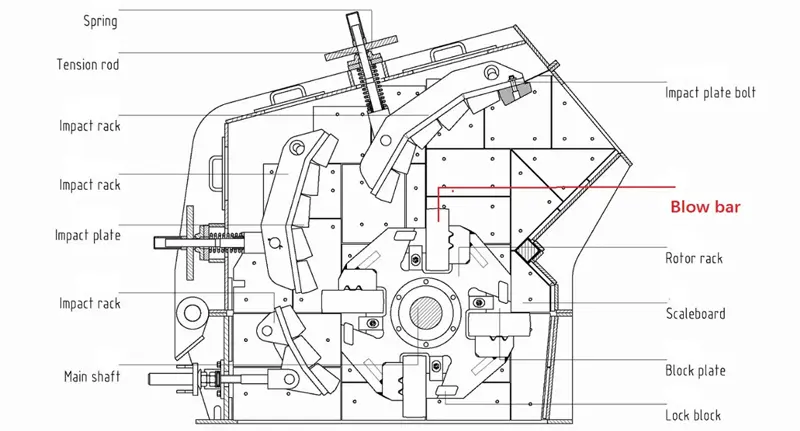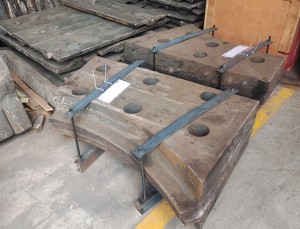In the process of reshaping the global infrastructure construction pattern, the continuous cross-border projects under the Belt and Road Initiative are becoming an important engine for promoting regional economic integration. The large-scale investment by the countries along the route in transportation networks, energy facilities, urban construction and other fields not only reshapes the geographical economic map, but also creates structural growth space for the engineering equipment and accessories market, among which the demand for crushing equipment and related parts has grown particularly significantly.
The core links of infrastructure construction are often accompanied by a large amount of earthwork and stonework projects. As a key equipment for material processing, the market demand for crushing equipment is deeply bound to the advancement of infrastructure projects. Data shows that approximately 60% of new projects in the countries along the route involve mining development, road construction or building demolition works, all of which rely on efficient crushing equipment for material processing. From hard rocks to construction waste, different working conditions have varying performance requirements for crushing equipment. This diverse demand has directly driven the segmented growth of the accessories market.
The market opportunities brought about by unbalanced regional development present a gradient distribution feature. The expansion plans of road networks in Southeast Asian countries have given rise to a strong demand for mobile crushing stations. The replacement frequency of vulnerable parts such as jaw plates and liners that come with such equipment is relatively high. Mineral resource development projects in Central Asia rely more on large-scale fixed crushing production lines, and the stability requirements for core components such as bearings and hydraulic systems are more stringent. In the old urban area renovation projects of Central and Eastern European countries, the demand for flexible accessories of small and medium-sized crushing equipment is steadily increasing. This regional disparity offers accessory suppliers the possibility of precisely matching the market.
The current situation of insufficient localization of the supply chain has created a window of opportunity for export trade. The manufacturing capacity of construction machinery in most countries along the routes is limited, and about 70% of the core components of crushing equipment rely on imports. The urgency of the project schedule also demands that the supply of accessories have the ability to respond quickly, which gives accessory suppliers that can provide a combination of standardization and customization a competitive edge. Especially in infrastructure projects in remote areas, the timely supply of spare parts is directly related to the construction progress. This “time cost first” procurement logic has opened up a blue ocean market for suppliers with efficient logistics networks.
The compatibility of technical standards is becoming a key factor in market access. The countries along the route include both regions that adopt European industrial standards and markets that follow local certification systems. Suppliers capable of providing multi-standard compatible accessories will enjoy a broader coverage. Meanwhile, with the enhancement of environmental protection requirements, the demand for the transformation and upgrading of low-energy consumption crushing equipment has increased, driving the growth in demand for energy-saving accessories such as new wear-resistant materials and intelligent control system components. The replacement market size brought about by this technological iteration is expanding at an annual rate of 15%.
Different stages of the project life cycle present differentiated accessory demand curves. During the project’s start-up period, the focus is mainly on the core components of the complete machine. After entering the large-scale construction stage, the demand for replacing vulnerable parts reaches its peak. During the final stage of the project and the operation and maintenance period, the demand for dedicated maintenance parts gradually becomes prominent. Grasping this periodic feature can help suppliers optimize their inventory structure and achieve precise matching with project progress.
The degree of perfection of cross-border logistics and service networks is increasingly becoming a core element of competition. For crushing equipment parts, the timeliness of transportation and the rationality of warehousing directly affect the customer experience. Establishing parts distribution centers at major logistics hubs along the line and achieving inventory visualization management through digital systems have become an effective model to enhance service response speed. This combination of “forward warehouse + digital dispatching” can shorten the delivery cycle of spare parts by more than 30%, significantly enhancing market competitiveness.


The infrastructure wave under the Belt and Road Initiative is reshaping the global trade pattern of engineering accessories. For the field of crushing equipment parts, this is not only an expansion of the market scale, but also an opportunity for product structure upgrading and service model innovation. Grasping regional demand differences, enhancing technological adaptability, and improving the supply chain system will be the key to seizing the initiative in this round of growth. As the project continues to advance, this cooperation based on infrastructure demands is gradually transforming into a long-term and stable trade partnership, injecting lasting impetus into the development of the industry.
Post time: Oct-10-2025
